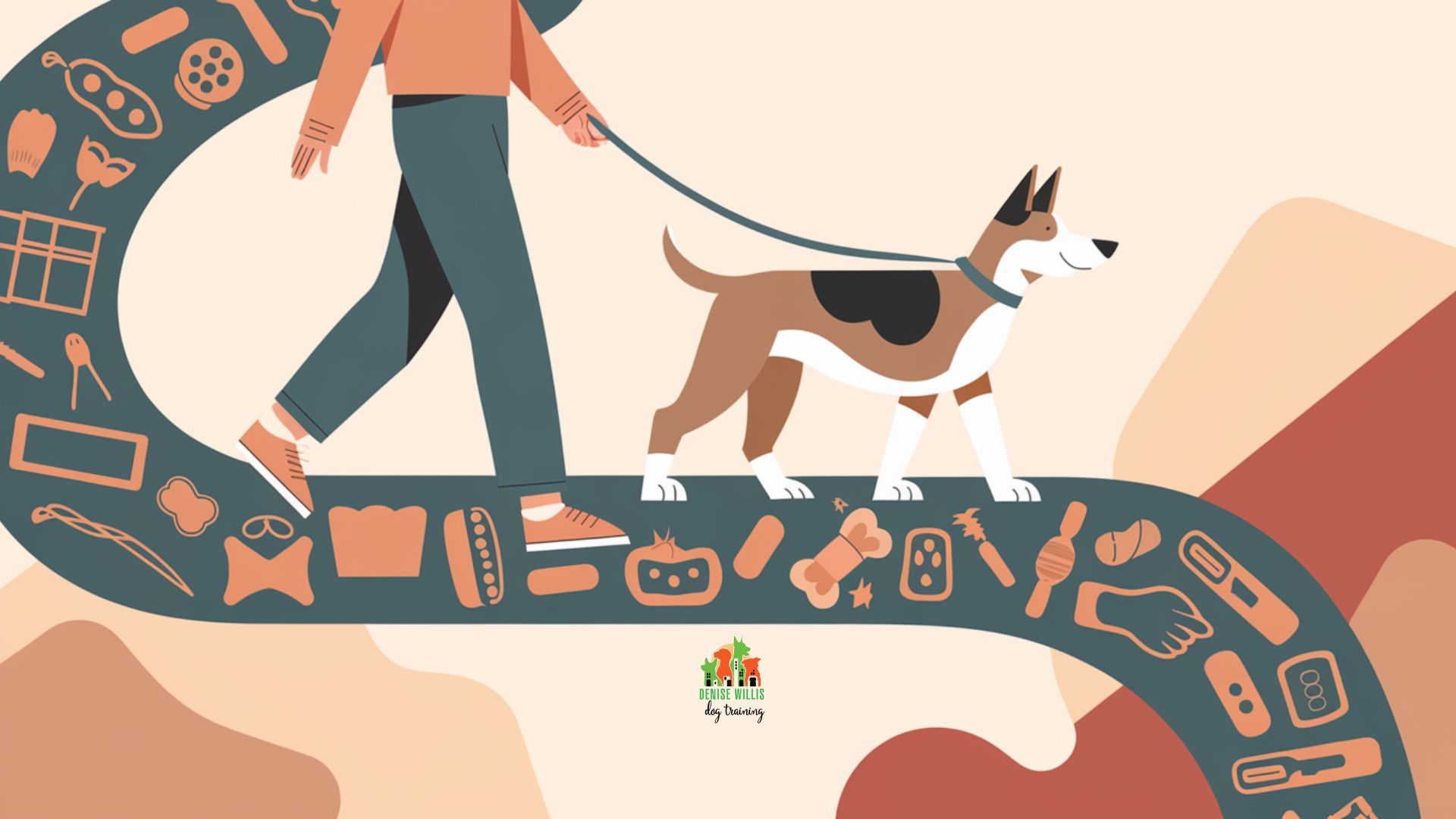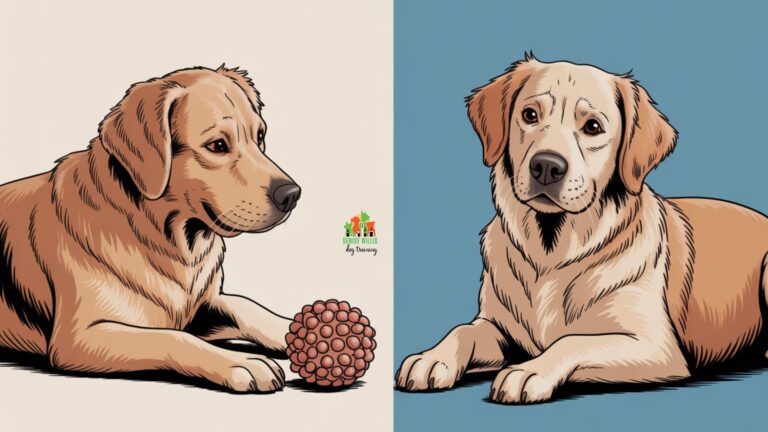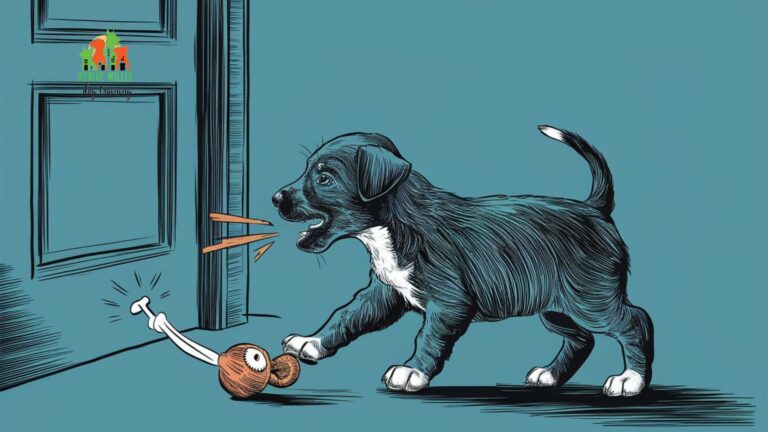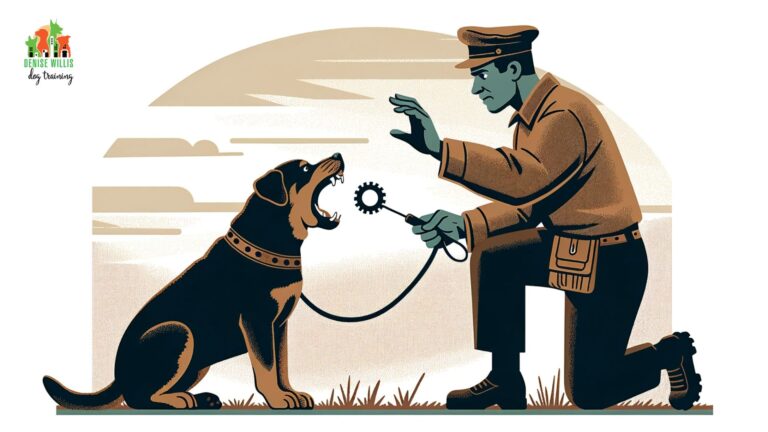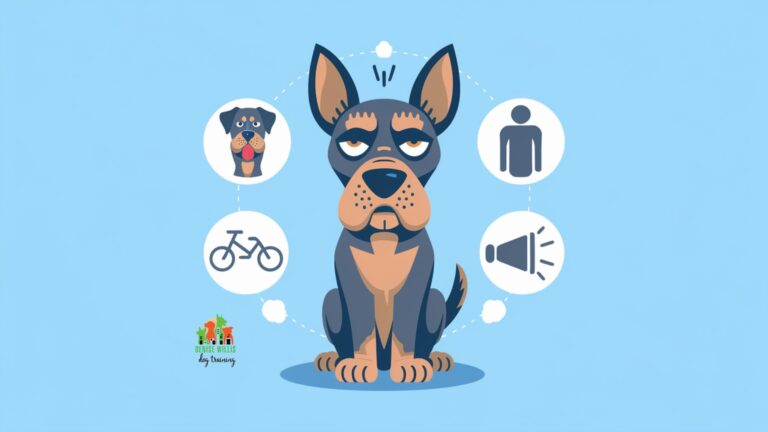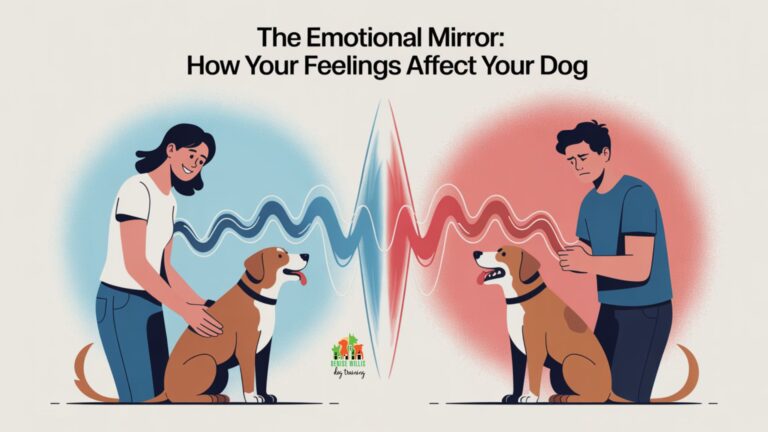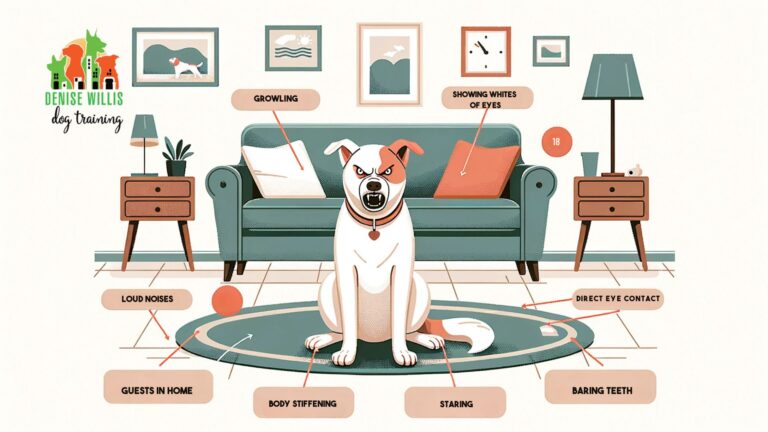Stay the Course: The Power of Consistency in Reducing Dog Aggression
📍 Service Area Notice: DW Dog Training provides in-person training services exclusively in the Greater Baltimore area. While our blog content is designed to help dog owners internationally, our hands-on training services are locally focused. For readers outside our service area, we hope you find value in our articles and welcome you to reach out with questions!
Has your sweet, tail-wagging companion ever turned into a growling guardian at the sight of another dog?
That split-second transformation from cuddle expert to self-appointed security officer catches many pet parents off guard.
According to research published in the American Working Dog Federation, consistent training approaches make the biggest difference in reducing aggressive behaviors. Much like teaching a child to ride a bike, the magic lies in steady, patient guidance rather than quick fixes. Studies show that with the right approach and consistent training, most dogs show significant improvement in managing their reactive responses.
Key Takeaways
- Regular training sessions create lasting behavioral changes
- Scientific research supports structured, consistent approaches
- Family involvement strengthens training success
- Professional guidance enhances results
- Environmental management plays a vital role
Understanding Dog Aggression Fundamentals
That heart-stopping moment when a peaceful walk turns into an unexpected standoff with another dog? It’s more common than you might think. Behind those reactions lies a complex web of instincts, learned behaviors, and environmental factors. According to research from the International Association of Canine Professionals, most aggressive behaviors stem from fear, anxiety, or resource guarding rather than actual malice.
Types of Aggressive Behaviors
Dogs express their concerns in various ways, much like humans don’t all handle stress the same way. Some might offer a polite warning growl, while others go full orchestra conductor with raised hackles and intense barking.
Studies from veterinary behavioral experts reveal that understanding these different expressions helps create more effective training strategies. It’s like learning your dog’s emotional language – except instead of using words, they’re using their whole body to tell you what’s bothering them.
Root Causes and Triggers
Remember when your smartphone froze because too many apps were running?
Dogs can experience similar overload. According to research in canine behavior, trigger stacking, when multiple stress factors pile up, often precedes aggressive outbursts.
Common triggers include:
- Territorial responses (the daily drama with delivery personnel)
- Resource guarding (protecting their favorite squeaky toy)
- Fear responses (because umbrellas are clearly suspicious)
- Social anxiety (sometimes other dogs just don’t understand personal space)
The Role of Environmental Factors
A dog’s environment shapes their behavior in profound ways. Recent studies in animal behavior demonstrate that consistent routines and predictable environments help reduce anxiety-driven aggression significantly.
Consider how you might feel living in a house where furniture rearranges itself daily and walls occasionally change color. Dogs thrive on knowing what to expect. It’s their security blanket.
The Four Pillars of Consistent Dog Training
Positive Reinforcement
92% success rate when rewards consistently follow good behavior. Think treats, not threats – your pup’s tail will thank you!
Clear Communication
Same commands, same responses, every time. No mixed signals – because your dog isn’t a mind reader!
Regular Practice
Short, daily sessions beat marathon training. 15 minutes daily shows 50% faster improvement than weekly hour-long sessions.
Family Involvement
When everyone follows the same rules, success rates jump by 70%. No good cop, bad cop needed!
Your Training Timeline: From Reactive to Remarkable
Got those training pillars memorized?
Great! Now let’s map out your adventure from “Oh no, another dog!” to “Oh hey, new friend!” No need for a GPS. We’ve got your route all planned out.
Think of this timeline as your training road trip. Sure, there might be a few rest stops and detours along the way (hello, squirrel distractions!), but keep your eyes on the destination. Like any good road trip, it’s not just about getting there – it’s about all the tail-wagging victories along the way.
Your Dog’s Journey to Calmer Days
Week 1-2: The Getting-to-Know-You Phase
Like any good detective, you’ll start by cracking the case of what sets your pup off. No magnifying glass needed, just keen observation and maybe a notebook. Time to figure out if it’s the mailman, skateboards, or that suspicious garden gnome next door.
Weeks 3-6: The Makeover Montage
This is where the magic happens! Time to turn that reactive rover into a calmer canine. Think of it as your dog’s version of a reality show transformation – minus the dramatic music and tearful confessionals. Start small, celebrate tiny wins, and keep those treats handy!
Weeks 7-12: The Consistency Champion
Remember how long it took you to build that gym habit? Your dog’s learning journey is similar, minus the expensive membership. Daily practice sessions, gradual challenges, and lots of positive reinforcement. Your pup might not get six-pack abs, but they’ll develop some impressive emotional muscles!
Months 3-6: The World Tour
Time to take this show on the road! Your pup’s been practicing in the comfort zone, now let’s see those skills shine in new places. Like learning to cook and then hosting a dinner party – slightly nerve-wracking but totally worth it.
Months 6-12: The Long Game
Like maintaining a good hair color or keeping up with social media trends, this is an ongoing journey. But unlike those things, your dedication here has lasting rewards. Keep up the good work, adjust as needed, and watch your pup become the neighborhood’s most improved player!
Each step builds on the last, just like stacking those fancy block towers your pup loves to knock over. (Don’t worry, we’re building something more lasting here!)
The Science Behind Consistency in Training
Dogs possess an incredible talent for pattern recognition. Just ask anyone whose pup knows dinner time down to the minute without ever seeing a clock. This natural ability makes consistent training particularly effective.
Neurological Basis of Learning
Your dog’s brain functions like a sophisticated recording studio, constantly laying down tracks of experience. Research in canine cognition shows that consistent training creates stronger neural pathways, making desired behaviors more automatic over time.
Think of it as creating a path through tall grass. The more you walk the same route, the clearer and easier to follow it becomes. That’s exactly what happens in your dog’s brain when you maintain consistent training practices.
Behavioral Modification Principles
Want to know why your dog suddenly remembers all their training when you’re holding a piece of chicken?
It’s not just about the food.
It’s about the consistent connection between their choices and outcomes. Research from behavioral experts shows that dogs learn best when consequences, both positive and negative, remain predictable.
Remember that time you tried a new recipe without measuring the ingredients?
Training without consistency is a lot like that. Sometimes it works out, but usually, you end up with something that doesn’t quite hit the mark.
Impact on Stress and Anxiety Reduction
Speaking of stress, your pup’s anxiety levels drop significantly when they can predict what’s coming next. Studies in canine behavior reveal that consistent training routines can reduce stress-related behaviors by up to 40%.
Training Success By The Numbers
Your sweet pup who acts like a mall security guard on walks?
Those reactions aren’t random. Research tells us exactly why some training approaches work better than others – and spoiler alert: it’s all about staying steady.
Want proof that consistency beats chaos? Check out these stats that might make you rethink your training strategy.
| Training Aspect | Percentage | Notes | Source |
|---|---|---|---|
| Stress in Negative Reinforcement | 65% | Dogs showing stress-related behaviors in negative reinforcement training | [1] |
| Stress in Positive Reinforcement | 8% | Dogs showing stress-related behaviors in positive reinforcement training | [1] |
| Early Development Impact | 70% | Aggression cases traced to lack of early socialization and training | [7] |
| Improvement with Consistency | 50% | Aggressive behaviors showing significant improvement with consistent training | [7] |
Those numbers pack quite a punch, don’t they?
When trainers stick to positive reinforcement (yes to chicken treats, no to stern lectures), only 8% of dogs show stress signals. But flip the script to negative reinforcement, and suddenly 65% of our four-legged friends are waving stress flags.
Ready for the real showstopper?
About 70% of aggression cases trace back to early life experiences – specifically, gaps in training and socialization during puppyhood. But don’t let that get you down.
Here’s the silver lining: consistent training leads to major improvements in half of all aggressive behaviors. Not too shabby for a few months of dedicated practice!
Armed with these stats, you’re probably wondering how to put this knowledge to work.
Building a Consistent Training Framework
Imagine trying to learn a new language where the words keep changing meaning every day.
Frustrating, right?
That’s how dogs feel when training signals shift constantly. Let’s break down how to keep things crystal clear for your four-legged student.
Establishing Clear Communication Channels
Dogs are like that friend who takes everything literally. They don’t get subtle hints or changing rules. Animal behavior research shows that clear, consistent signals lead to faster learning and better retention.
Quick tips for crystal-clear communication:
- Use the same command words every time
- Keep hand signals consistent
- Match your tone to the situation
- Time your responses predictably
Creating Structured Routines
Remember how your elementary school teacher had specific routines for everything?
There’s a reason for that. According to professional training studies, structured routines help dogs understand expectations and reduce anxiety-driven aggression.
A solid routine isn’t just about training sessions.
It’s about creating a predictable daily flow that helps your dog feel secure. When dogs know what to expect, they’re less likely to react aggressively out of fear or uncertainty.
Setting Realistic Training Goals
Let’s be honest.
Your pup probably won’t be teaching quantum physics anytime soon (though wouldn’t that be something?). Expert analysis shows that realistic, progressive goals lead to better long-term results than trying to fix everything at once.
Think of it like building a Lego masterpiece. You start with the foundation and add pieces one at a time. Rush the process, and you might end up with a wobbly structure that falls apart under pressure.
Practical Implementation Strategies
Ready to turn that reactive rover into a calmer canine?
Our experience shows that success comes from small, consistent steps rather than grand gestures. Let’s break down the practical ways to make consistency your new superpower in managing dog aggression.
Daily Training Protocols
Ever noticed how your morning coffee ritual has specific steps that never change?
Dogs thrive on similar predictability. Research in behavioral training demonstrates that short, regular training sessions yield better results than sporadic marathon sessions.
A solid daily protocol includes:
- Regular exercise times
- Structured feeding schedules
- Brief training moments
- Consistent rest periods
Response Consistency Techniques
Remember that time your TV remote worked perfectly, then suddenly needed seventeen button pushes to change one channel?
That’s what inconsistent training feels like to your dog. Animal behavior studies show that dogs become confused and anxious when responses to their behavior vary randomly.
Each family member needs to respond the same way to aggressive displays. If Mom says “no jumping” while Dad encourages excited greetings, your pup ends up playing behavioral roulette, never quite sure which response is right.
Managing Trigger Situations
Let’s talk about those moments that make your dog go from zero to superhero faster than a squirrel crossing the yard. Professional training research confirms that managing these situations effectively requires:
- Identifying triggers early
- Maintaining safe distances
- Using consistent redirection techniques
- Rewarding calm behavior
Advanced Consistency Techniques
Think your pup’s ready for the graduate-level stuff?
These advanced methods build on your foundation of consistency to create lasting behavioral changes. Our training experience shows that dogs who master these techniques show remarkable improvement in managing their reactive responses.
Counter-conditioning Methods
Ready to flip the script on your dog’s reactions?
Counter-conditioning is like teaching your dog that the monster under the bed is actually just a friendly dust bunny. According to behavioral research, changing your dog’s emotional response to triggers works better than just managing their reactions.
Think about how you learned to love vegetables (or at least tolerate them). Someone probably paired them with things you already enjoyed. The same principle works with dogs. We’re just swapping out broccoli for scary triggers and cheese for positive associations.
Desensitization Approaches
Remember learning to swim?
You probably didn’t start in the deep end. Training studies show that gradual exposure to triggers, starting at a distance where your dog remains calm, builds confidence naturally.
Our training sessions often start with what we call the “boring is beautiful” approach. The more mundane we can make those trigger situations feel, the better your dog handles them. It’s like teaching someone afraid of spiders that most eight-legged friends are more interested in catching flies than plotting world domination.
Progress Monitoring Systems
Ever tried to lose weight without stepping on a scale?
Tracking progress in dog training works similarly – you need clear markers to know you’re moving in the right direction. Professional research emphasizes the importance of monitoring and adjusting training approaches based on concrete results.
Common Challenges and Solutions
Let’s get real. If dog training were always smooth sailing, every pup would be a perfect angel. But just like that time you tried teaching your grandmother to use a smartphone, sometimes things get a bit… interesting.
Maintaining Family-wide Consistency
You know that one family member who thinks rules are more like gentle suggestions?
According to expert analysis, family consistency ranks as the top challenge in successful dog training.
Quick reality check: Your dog isn’t a mind reader (though sometimes they seem pretty close). When one person allows counter surfing while another scolds it, your pup ends up more confused than a squirrel at a nut-free picnic.
Addressing Setbacks
Had a rough day where everything went sideways? Welcome to the club!
Training research shows that setbacks are normal and even expected. The key isn’t perfection. It’s how you handle the bumps in the road.
Think of setbacks like those times you fall back into old habits during a diet. They’re opportunities to strengthen your resolve, not reasons to give up. Our experience shows that dogs, like humans, learn best when we treat mistakes as stepping stones rather than roadblocks.
Adapting to Different Environments
Your dog might be a perfect angel at home, but turn into a wannabe security guard at the park.
Sound familiar?
Training studies show that environmental consistency matters just as much as training consistency.
Remember that time you tried working from a coffee shop and couldn’t focus because everything was different from your home office?
Dogs face similar challenges when applying their training in new places.
The secret sauce?
Gradually introducing new environments while maintaining those rock-solid training foundations.
Product Recommendations
Shopping for a reactive dog isn’t just retail therapy. It’s like assembling a superhero utility belt for your four-legged crime fighter. Sure, your pup thinks the mail carrier is their arch-nemesis, but with the right tools, we can turn that guard dog into a model citizen.
Let’s peek into our behavior-modification treasure chest!
- ThunderShirt Classic Dog Anxiety Jacket: Like a warm hug from a very persistent octopus, this anxiety jacket helps your pup feel secure when the world gets too exciting. It’s basically a superhero cape for staying calm instead of saving the world. Warning: May cause your formerly alert guard dog to become too relaxed to care about that suspicious squirrel conspiracy in the backyard.
- PetSafe Gentle Leader Head Collar: Turn your neighborhood watchdog into a sophisticated socialite with this clever head collar. It’s like power steering for your pup – smooth turns, better control, zero engine revving at passing cars. Caution: Your dog may temporarily believe they’ve joined a secret society of distinguished canines who wear fancy face accessories.
- KONG Classic Dog Toy: The Swiss Army knife of dog toys – perfect for redirecting those protective instincts into productive chewing. It’s like a puzzle, stress ball, and snack dispenser all rolled into one rubber cone of joy. Warning: Your dog may start expecting their entire dinner stuffed into this magical red distraction device.
- Zesty Paws Calming Bites for Dogs: These treats are like a yoga class in a bag, helping your pup find their inner zen when the world gets too exciting. Perfect for those “everything is totally fine but I must alert the entire neighborhood” moments. Warning: May cause excessive chill vibes and spontaneous napping.
- Outward Hound Nina Ottosson Dog Brick Puzzle Toy: Keep your canine Sherlock Holmes busy with this interactive puzzle. It’s like “Escape Room: Doggy Edition” but with treats instead of clues. Warning: May turn your dog into a treat-finding savant who starts solving your crossword puzzles.
- Zuke’s Mini Naturals Training Dog Treats: These tiny treats are like doggy cryptocurrency – small, valuable, and your pup will work overtime to earn them. Perfect for rewarding those moments when they choose not to announce their presence to the entire neighborhood. Caution: Your dog may start expecting these for every minor achievement, like successfully napping or heroically ignoring the vacuum cleaner.
While these gadgets won’t transform your protective pooch into a zen master overnight, they’ll certainly make the training journey more entertaining. Think of it as investing in your dog’s behavioral stock market. The returns might take time, but the dividends of a well-behaved pup are priceless!
Further Reading
Ready to dive deeper into the fascinating world of canine behavior?
These articles are like a Netflix series for dog psychology – minus the dramatic soundtrack and cliffhanger endings.
- 10 Warning Signs Your Dog Might Bite and How to Prevent It: Think your dog’s just smiling with extra teeth? This guide helps decode those subtle “please back off” signals before they become louder statements. Spoiler: Yawning isn’t always about being tired!
- Decoding Your Dog: 15 Body Language Signals You Need to Know: Ever wish your dog came with subtitles? This is the next best thing! Learn to read your dog better than a poker player reads tells.
- How to Manage Your Dog’s Territorial Aggression: For the dog who thinks your entire zip code is their personal kingdom. Learn how to negotiate better property boundaries with your furry real estate agent.
- 5 Proven Strategies to Stop Your Dog’s Aggression Towards Other Dogs: Transform your canine confrontationalist into a doggy diplomat. Perfect for pups who think every walk is a West Side Story rumble.
- Dog Aggression Solutions: A Complete Guide: The ultimate playbook for understanding and addressing aggressive behavior. It’s like “The Art of War” meets “How to Win Friends and Influence People” – for dogs!
Time to unleash your inner dog behavior detective!
These articles are your training treats for the mind.
Devour them wisely. Just remember, while reading won’t instantly make you a dog whisperer, it’ll definitely make you the most interesting conversation starter at the dog park!
Frequently Asked Questions About Consistency in Addressing Dog Aggression
Q: My dog only shows aggression on leash – what gives?
A: Leash reactivity often stems from feeling trapped or restricted. Behavioral research shows that dogs who can’t follow their natural flight response might choose fight instead. Regular training with positive reinforcement helps them learn that passing triggers while leashed can be a calm experience.
Q: How long before I see results from consistent training?
A: Every dog writes their own timeline, just like how some people learn to dance in a week while others (like me) still can’t master the Electric Slide. Professional studies indicate most dogs show improvement within 4-6 weeks of consistent training, but lasting changes might take 3-6 months.
Q: What if my dog regresses after making progress?
A: Think of it like learning to ride a bike – sometimes you wobble even after mastering balance. Training research shows that temporary setbacks are normal, especially during stressful times or changes in routine. The key? Keep those consistent training wheels spinning.
Test Your Training Smarts!
Ready to see if you’ve been paying attention?
No pressure. This isn’t like that math test you didn’t study for in high school. Let’s see how much of this consistency stuff stuck in your brain. Don’t worry if you don’t ace it on the first try. Even professional trainers started somewhere!
Are You a Consistency Champion?
See? Not so scary after all! Whether you aced it or learned something new, you're already miles ahead of where you started.
Final Thoughts
Ready to be the steady lighthouse in your dog's stormy sea of triggers?
Our years of experience working with countless dogs have shown us one unchanging truth: consistency transforms good intentions into real results.
Those moments when your formerly reactive dog calmly watches a squirrel parade without losing their cool?
That's not magic.
It's the power of showing up consistently, day after day, with patience and understanding.
Looking Ahead
Training success isn't about perfection.
It's about progress. Maybe your dog still occasionally barks at the neighbor's cat, but now they can refocus on you instead of launching a full neighborhood watch program.
That's worth celebrating!
Consider working with our team at DW Dog Training. Together, we'll create a consistent training approach that fits your lifestyle and helps your dog become their best, most confident self. Because at the end of the day, a well-trained dog isn't just better behaved.
They're happier, more relaxed, and ready to enjoy life's adventures by your side.

